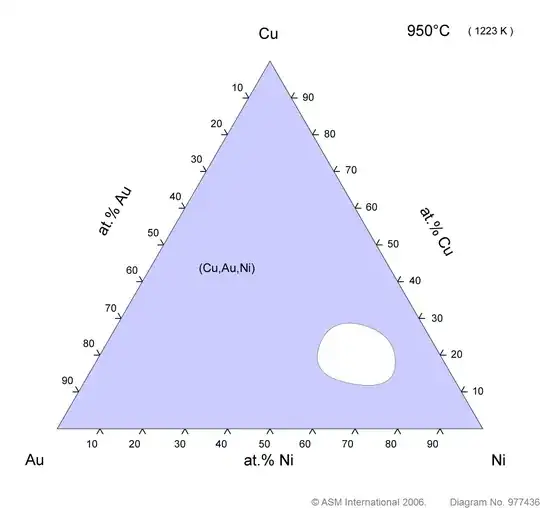Based on intuition, I do not think it is possible for phases to be disconnected, and to understand this I think we need a better idea of what we mean when we call something a "phase." Typically, we think of a phase as the structure (or symmetry) of a material.
For example, in the $H_2O$ example, it is possible to travel from the liquid phase to the gas phase without undergoing a phase transition, by moving around the critical point. The only aspect distinguishing these two phases is the density of molecules. Alternatively, we can get an overlap region in the phase diagram if we consider materials that undergo a hysteresis. By controlling an external field, you can shift a material into a specific phase that it will maintain when you turn the field off. In this way you might think that two possible phases could overlap in the phase diagram depending on the history of the system (It would be more of a metastable state).
If you're only concerned about the structure, then usually a third axis to consider is composition of an alloy. An alloy can be FCC at 90% species A and 10% species B, have some arbitrary middle phase, and then FCC again at 10% species A and 90% species B. Typically, since the concentration of material is different, we label that differently.
For a pure material, we may control its macroscopic degrees of freedom (dof), such as temperature and pressure, but not the microscopic dof, such as molecule locations. By setting the macroscopic dof, the molecules respond by arranging in a preferred state that is a balance of many energetic contributions at the microscopic level. The relative strengths of these contributions are dependent on the macroscopic properties such as temperature, pressure and external fields that set a minimum energy state as well as microscopic contributions like paramagnetic effects. You can get interesting phases when these effects are comparable, for example spinodal decomposition.
This is how I think of it intuitively, in terms of microscopic energy balances and driving forces. Mathematically, I cannot show that an energetic contribution can dominate in two distinct locations of the phase diagram or that some balance of them leads to identical states. It isn't something I have come across and cannot imagine such a case where fixing some contributions doesn't lead to an uncontrolled contribution adjusting (for example in the case with density fluctuations in $H_2O$ with temperature and pressure or volume fixed).
